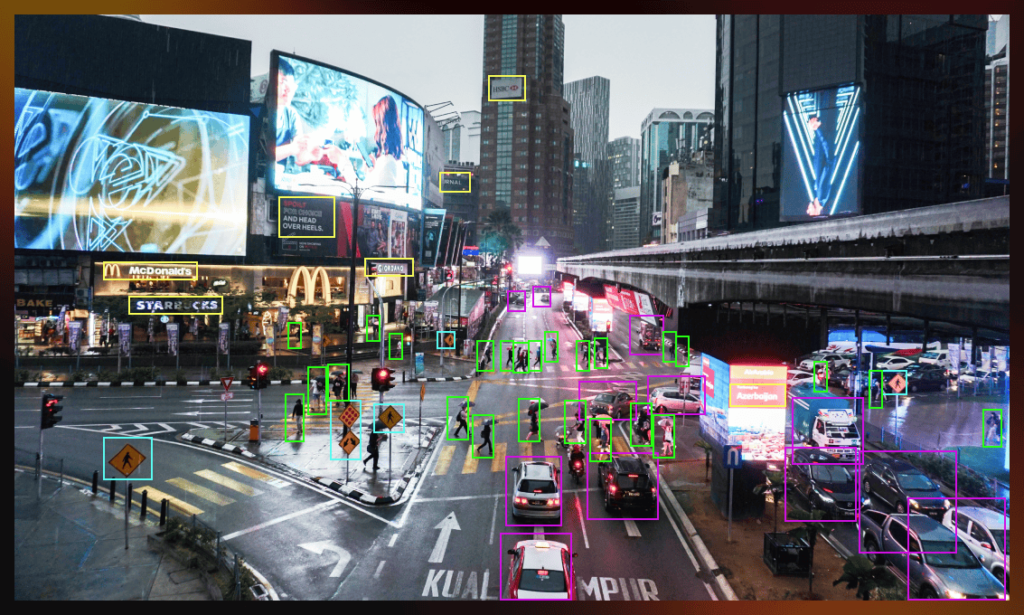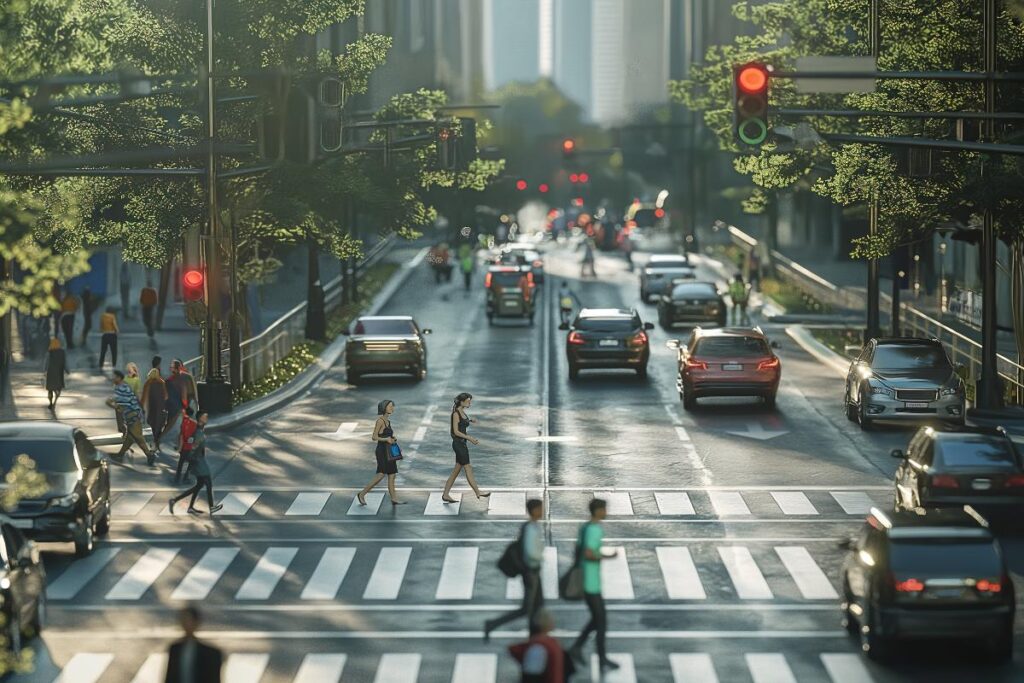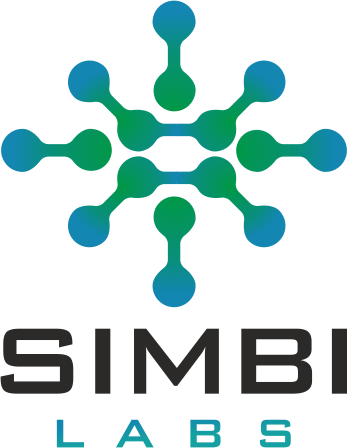Smart Cities and AI Crowd Management: Building Efficient Urban Space

Cities are living, breathing ecosystems. They’re more than just buildings and roads—they’re the places where we work, explore, celebrate, and connect. But as urban populations grow, these vibrant spaces face growing challenges: traffic congestion, overcrowded public transport, strained emergency services, and safety concerns in public places.
The solution isn’t simply adding more infrastructure—it’s making what we have smarter. That’s where AI (Artificial Intelligence) steps in. With the power to analyze massive amounts of data and respond in real time, AI is helping cities become more efficient, resilient, and people-friendly.
One of the most crucial aspects of this transformation is AI Crowd Management. Whether it’s daily commuters at a train station, fans at a football match, or shoppers in a mall—how we move together defines the rhythm of city life. With AI, cities can now understand and manage this rhythm like never before.
What is a Smart City?


A smart city is an urban area that leverages information and communication technologies (ICT) and data to enhance the efficiency of city operations, improve the quality of life for its inhabitants, and promote sustainable development. It goes beyond simply implementing technology; a smart city strategically integrates digital solutions across various aspects of urban life, including governance, infrastructure, mobility, environment, and citizen services. This involves deploying networks of sensors, smart devices, and data analytics platforms to gather real-time information, enabling informed decision-making and proactive responses to urban challenges. The core objective is to create a more livable, resilient, and prosperous city by optimizing resource utilization, reducing environmental impact, fostering economic growth, and enhancing citizen engagement and well-being. Ultimately, a smart city aims to create a connected ecosystem where technology serves as a tool to address the complex needs of a growing urban population and build a sustainable future.
What is AI Crowd Management?
AI Crowd Management refers to the use of artificial intelligence technologies to monitor, analyze, and manage large gatherings of people.
It involves deploying AI-powered systems that can process data from various sources, such as video surveillance cameras, social media feeds, IoT sensors, and mobile devices, to gain real-time insights into crowd density, movement patterns, and behavior. These systems utilize computer vision, machine learning, and natural language processing algorithms to identify potential issues like overcrowding, bottlenecks, unusual activities, or security threats. By analyzing this data, AI can provide valuable information to event organizers, security personnel, and city authorities, enabling them to make informed decisions and take proactive measures to ensure public safety, optimize crowd flow, and enhance the overall experience for attendees.
The applications of AI in crowd management are diverse and continuously evolving. For instance, AI-powered video analytics can automatically detect and alert authorities about unusually high crowd density in specific areas, allowing for timely intervention to prevent stampedes or other safety hazards. Predictive modeling algorithms can analyze historical data and real-time information to forecast crowd behavior, helping organizers plan staffing, resource allocation, and layout adjustments in advance. Anomaly detection capabilities can identify irregular movements or behaviors that might indicate potential security risks, such as fights or suspicious individuals. Furthermore, AI can facilitate communication with the crowd through chatbots or digital signage, providing real-time updates, directions, and safety information. In emergency situations, AI can assist in assessing the situation, recommending evacuation routes, and coordinating response efforts. The ultimate goal of AI crowd management is to create safer, more efficient, and more enjoyable environments for large gatherings by leveraging the power of intelligent technology to understand and respond to the complex dynamics of human crowds
Where AI Crowd Management is Making a Real Difference
1. Transportation Hubs: Keeping People Moving
urban transport systems are the arteries of a city—and they’re often overwhelmed. Think of the morning rush hour at metro stations or airports.
With AI:
Passenger movement is tracked in real time.
Peak hours are predicted, and crowding is reduced by adjusting train or bus schedules.
Security screenings use facial recognition to move travelers through checkpoints faster while flagging suspicious behavior.
Example: At Hong Kong International Airport, AI is used to optimize crowd flow at immigration and baggage claim, minimizing wait times and maximizing safety.
2. Events and Stadiums: Safety at Scale
Large gatherings like concerts, sports events, or religious festivals bring joy—but also risk. Overcrowding can escalate into stampedes or chaos if not properly managed.
AI steps in to:
Detect when a space is reaching capacity
Alert officials to redirect people or open new exits
Monitor for emergency triggers like panic behavior, altercations, or medical incidents
Example: During the Hajj pilgrimage in Saudi Arabia, AI and sensors help manage millions of people moving through holy sites, reducing risks of crowd crushes.
3. Emergency Response: Faster, Smarter, Lifesaving
When a crisis hits—a fire, earthquake, or act of violence—every second counts. AI systems can be life-saving in these moments.
AI can:
Identify the crowd’s flow and density to pinpoint trapped areas
Guide evacuation routes using real-time signage or mobile alerts
Deploy emergency services to the most affected zones, faster than traditional methods
Example: After an earthquake in Japan, smart city systems rerouted people away from damaged infrastructure and helped emergency responders reach survivors more quickly.
4. City Streets and Public Spaces: Everyday Optimization
AI isn’t just for big events or emergencies—it’s transforming daily city life.
Pedestrian sensors adjust traffic signals dynamically to prevent crowd buildup at crossings.
Public parks and plazas track foot traffic to help with maintenance, lighting, and waste management.
Urban planners use heat maps generated by AI to redesign sidewalks, bike lanes, or public restrooms based on how people actually move and gather.
Example: Barcelona’s smart city project uses AI to manage street lighting and pedestrian flow, improving energy efficiency and public safety
The Benefits of AI Crowd Management : Why This Technology Matters
1. Enhanced Public Safety
With early detection of crowding or abnormal movement, authorities can step in before situations escalate. Whether it’s preventing a fight, stopping a stampede, or detecting unattended bags, AI adds an extra layer of vigilance.
2. Efficient Resource Allocation
AI doesn’t just react—it predicts. That means cities can deploy police, cleaning crews, or medics before problems arise, rather than stretching resources thinly across the city.
3. Smarter Urban Design
Data collected by AI isn’t just for the now—it informs the future. City planners can design more walkable, safer, and user-friendly spaces based on actual human behavior.
4. Improved Public Experience
When systems respond quickly and intuitively, citizens enjoy smoother commutes, safer events, and a city that just feels like it understands their needs.
The Future: Smarter Cities, Happier People

The vision of the future where smarter cities lead to happier people is a compelling one, painting a picture of urban environments seamlessly integrated with technology to enhance every facet of life. In this future, intelligent infrastructure anticipates and responds to the needs of its citizens. Smart grids optimize energy consumption, reducing costs and environmental impact. Autonomous public transportation systems, guided by AI, offer efficient, safe, and personalized mobility, alleviating traffic congestion and freeing up valuable time. Waste management becomes proactive, with sensors monitoring fill levels and optimizing collection routes, leading to cleaner and healthier environments. Air and water quality are continuously monitored and managed, ensuring healthier living conditions.
Beyond infrastructure, smarter cities empower their inhabitants through accessible and personalized services. Digital platforms provide seamless access to government services, healthcare, and education, reducing bureaucratic hurdles and improving efficiency. Data-driven insights inform urban planning, creating more livable neighborhoods with optimized green spaces, recreational facilities, and community resources. Public safety is enhanced through intelligent surveillance systems that can predict and prevent crime while respecting individual privacy. Moreover, smart city initiatives foster greater citizen engagement, providing platforms for feedback, participation in decision-making, and the co-creation of solutions. This interconnected and responsive urban fabric fosters a sense of community, belonging, and well-being, ultimately contributing to a higher quality of life and happier, more fulfilled citizens. However, realizing this future necessitates careful consideration of ethical implications, data privacy, cybersecurity, and ensuring equitable access to technology for all segments of the population to avoid exacerbating existing inequalities.
For more details contact:grow@simbi.in
Frequently
Asked Questions
A city becomes “smart” when it uses technology—especially data, AI, and connected sensors—to enhance urban life. But “smart” doesn’t mean packed with gadgets or futuristic vehicles. It means the city is responsive to its citizens’ needs and efficient in how it runs its services.
For example, a smart city might use AI to manage traffic lights based on real-time road congestion, or sensors to monitor air pollution levels and issue health alerts. It could use predictive algorithms to optimize garbage collection or energy usage. What ties all of this together is that the city gathers information from its environment, analyzes it intelligently, and acts on it to improve people’s lives. The goal isn’t just innovation—it’s making cities more livable, safe, and sustainable for everyone.
AI helps manage crowds by monitoring, analyzing, and predicting how people move in public spaces. It uses a mix of camera feeds, sensors, mobile data, and computer vision to understand crowd dynamics in real time. Then, based on what it sees, it helps city systems respond appropriately.
For example:
In a train station, AI can detect when platforms are becoming too crowded and redirect foot traffic through alternate exits.
During a festival, it can identify chokepoints and automatically update signage to guide people to less crowded paths.
In emergencies, it helps police and rescue teams locate where help is most needed based on heatmaps or movement anomalies.
It’s like having an invisible traffic controller constantly optimizing how people flow through the city—without them even noticing
The benefits are both practical and profound. Here's what AI crowd management can bring to cities:
Public Safety: By detecting crowd surges or abnormal behavior, authorities can prevent dangerous situations like stampedes or riots.
Emergency Response: AI provides real-time insights that help first responders act quickly and reach the right places faster.
Better Commuting: Transit systems can be adjusted dynamically to reduce bottlenecks during rush hours or disruptions.
Urban Planning: Data about crowd flow helps planners design better sidewalks, transit hubs, and public facilities.
Improved Citizen Experience: When cities respond to people’s movement patterns, daily life becomes less stressful—fewer delays, better access, smoother navigation.
Ultimately, it makes the urban experience safer, more seamless, and more enjoyable.
Yes—many cities around the world are already using AI-powered crowd management systems. For example:
Singapore uses AI to monitor public transport and reroute buses and trains during peak hours to reduce delays.
Barcelona uses smart sensors to manage traffic, public lighting, and even pedestrian flows in tourist-heavy areas.
Dubai uses facial recognition and AI surveillance in malls and public events to enhance safety.
Tokyo employed AI crowd control tech during the 2020 Olympic Games to manage both traffic and pedestrian movement efficiently.
These are just a few examples—hundreds of cities globally are in various stages of adopting these technologies.
This is one of the most important concerns. AI crowd management systems often rely on video surveillance, facial recognition, and mobile data—all of which can raise red flags for personal privacy.
Some of the risks include:
Surveillance Overreach: Constant monitoring can create a sense of being watched all the time, even in everyday life.
Data Breaches: If the data collected isn’t securely stored, it could be exposed or misused by malicious actors.
Lack of Consent: Citizens are often unaware that their movement is being tracked or analyzed.
Bias and Misidentification: Facial recognition systems, if poorly trained, can misidentify people, especially those from minority groups, leading to potential discrimination or false accusations.
This is why transparency, regulation, and ethical design are essential. Cities must balance safety and convenience with citizens’ rights to privacy and dignity.
